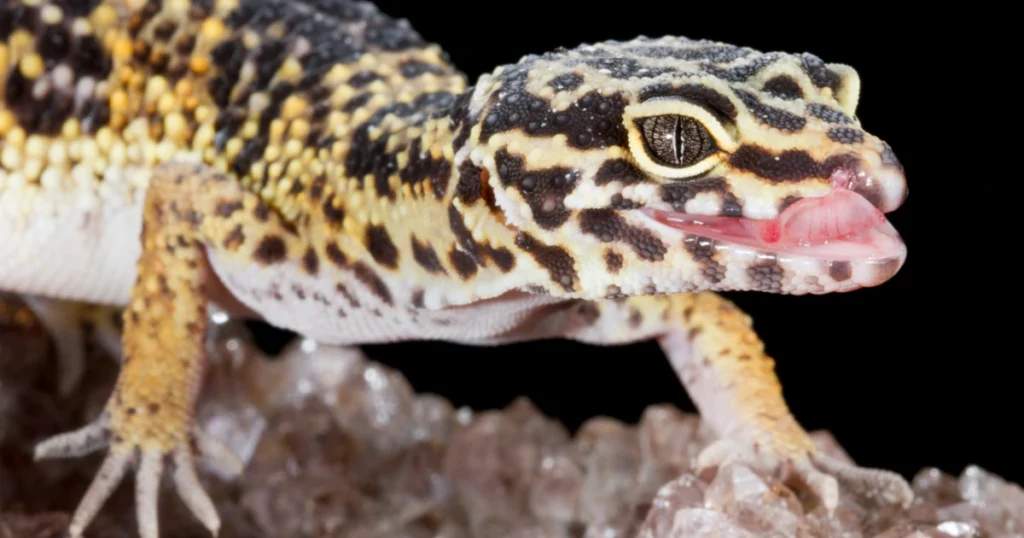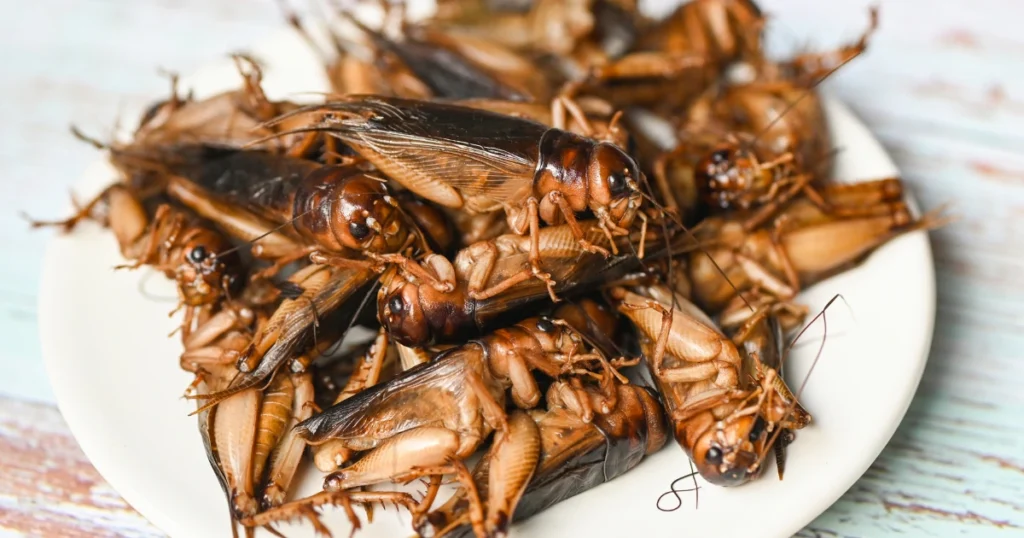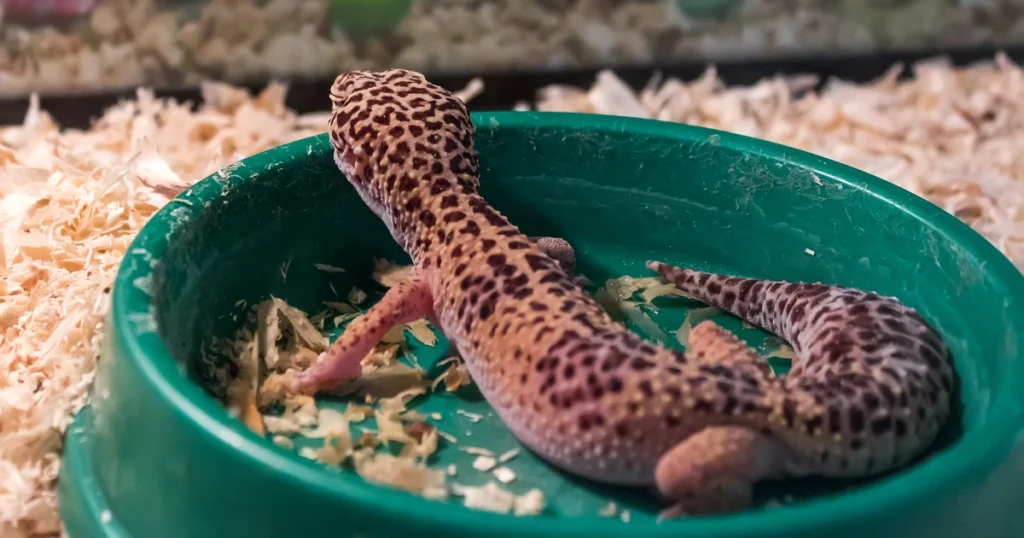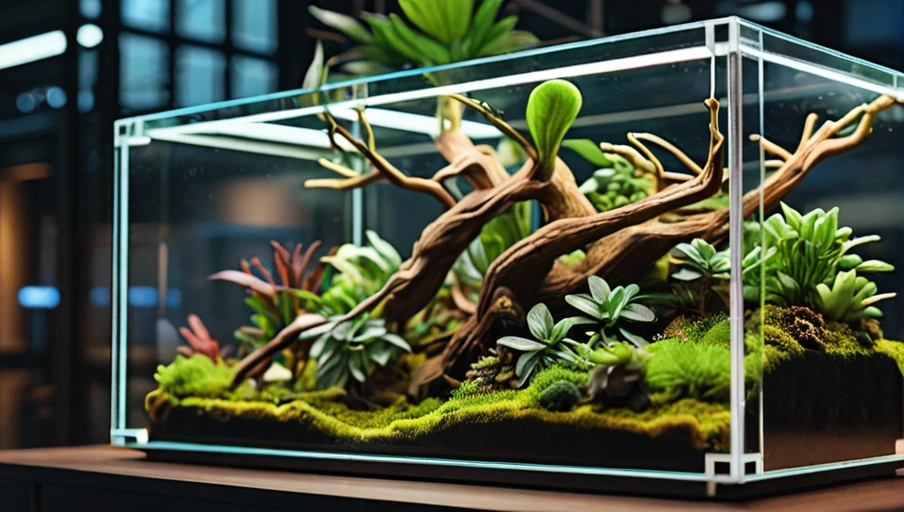
As a leopard gecko owner myself, I’ve learned that there’s more to feeding leopard gecko crickets than meets the eye. Leopard geckos adore their crickets! But choosing the wrong crickets or neglecting proper nutrition can lead to health problems.
Want to make sure those cricket meals are packed with the good stuff? Here’s how to optimize your gecko’s favorite snack and ensure they get the essential nutrients they need to thrive!
Understanding the Leopard Gecko’s Dietary Needs
Leopard geckos are insectivores, meaning their diet in the wild consists primarily of small insects and other invertebrates. In captivity, we need to replicate this diet as closely as possible to keep our scaly friends happy and healthy.
Crickets are an excellent staple food for leopard geckos, providing them with essential proteins, fats, and nutrients.
But did you know that the size, age, and quantity of the crickets you feed can significantly impact your leopard gecko’s wellbeing? It’s true! Choosing the right crickets and offering them correctly is crucial for maintaining your pet’s optimal health.
That’s why I’m here to share my top tips for feeding leopard geckos their favorite crickets.
Selecting the Perfect Crickets
When it comes to leopard gecko crickets, size really does matter. As a general rule, the cricket should be no larger than the distance between your gecko’s eyes. Offering prey that’s too big can pose a choking hazard or even cause internal injuries.
On the other hand, crickets that are too small may not provide enough sustenance. I recommend starting with medium-sized crickets and adjusting the size as your leopard gecko grows. You can find a wide variety of cricket sizes at your local pet store or online.
Just be sure to choose a reputable supplier that offers high-quality, healthy crickets.

Gut-Loading Leopard Gecko Crickets: A Nutrition Boost
But it’s not enough to just offer plain, store-bought crickets. To truly nourish your leopard gecko, you’ll need to “gut-load” the crickets first. Gut-loading is the process of feeding the crickets a nutrient-rich diet before they become your gecko’s meal.
This ensures that the crickets are packed with essential vitamins, minerals, and other nutrients that your leopard gecko needs. I like to gut-load my crickets with a high-quality commercial gut-loading formula, which you can find at most pet stores.
These formulas are specially designed to provide crickets with a balanced, nutritious diet. You can also get creative and gut-load your crickets with a variety of fresh fruits, vegetables, and other healthy foods.
*FYI, I may earn a small commission if you click on some of the links in this post.
Mealtime Considerations
Now that you’ve selected the perfect crickets and gut-loaded them, it’s time to think about how to actually feed them to your leopard gecko. The way you present the crickets can make a big difference in your pet’s willingness to eat and their overall health.
Quantity and Frequency
When it comes to feeding, a good rule of thumb is to offer your leopard gecko as many crickets as they can consume in 10-15 minutes, 2-3 times per week. This ensures that your gecko is getting enough to eat without overfeeding, which can lead to obesity and other health issues.
The specific quantity will depend on the size of your leopard gecko. Younger, smaller geckos may only need 5-10 crickets per feeding, while larger adults can handle 15-20. Pay attention to your gecko’s body condition and adjust the portion sizes accordingly.

Providing a Varied Diet
While crickets should make up the bulk of your leopard gecko’s diet, it’s important to offer a varied menu to ensure they get all the necessary nutrients. I like to supplement their cricket feasts with other nutrient-dense feeder insects, such as mealworms, waxworms, or dubia roaches.
Just be sure to limit the higher-fat treats, like waxworms, to occasional indulgences. Too much of a good thing can lead to weight gain and other problems. Aim for a balanced diet that includes a variety of insect prey.
My Commitment to Your Leopard Gecko’s Health
As an avid leopard gecko enthusiast, I’m deeply committed to ensuring the wellbeing of these amazing creatures. I’ve spent years studying their nutritional requirements and experimenting with different feeding strategies to find the most effective and sustainable approach.
By sharing my extensive experience and expertise, I hope to empower you to provide your leopard gecko with the optimal diet and care they deserve.
Handling and Serving Crickets
Now that you know the basics of what and how much to feed, let’s talk about the actual process of serving those tasty crickets to your leopard gecko.
Crickets on the Move
Leopard geckos are natural hunters, and they relish the thrill of chasing down their prey. That’s why it’s important to offer the crickets in a way that allows your gecko to exhibit this natural behavior.
I like to use a small, shallow feeding dish or container and simply drop the crickets in, allowing them to roam around freely.
This not only engages your leopard gecko’s predatory instincts, but it also encourages them to move around and explore their environment – something that’s essential for their physical and mental wellbeing.
Just be sure to keep a close eye on the feeding session to ensure your gecko is able to easily capture and consume the crickets.

Dusting for Optimal Nutrition
In addition to gut-loading the crickets, you’ll also want to “dust” them with a calcium and vitamin supplement before feeding. This helps ensure your leopard gecko is getting all the essential nutrients they need, as they may not be able to obtain sufficient amounts from the crickets alone.
There are a variety of high-quality calcium and vitamin supplements designed specifically for reptiles. I like to use a formula that contains both calcium and vitamin D3, which is crucial for proper bone development and metabolic function.
Gently shake or roll the crickets in the supplement powder before placing them in the feeding dish.
Troubleshooting Feeding Challenges
While leopard geckos are generally easy to care for, there may be times when you encounter a few hiccups when it comes to feeding. Here are some common issues and how to address them:
Picky Eaters
If your leopard gecko seems uninterested in their crickets, try offering a variety of different sizes or types of insects. Some geckos have preferences, and switching up the menu can help spark their appetite. You can also try hand-feeding the crickets or using feeding tongs to see if that grabs their attention.
Constipation and Impaction
Overfeeding or offering the wrong size of crickets can sometimes lead to constipation or impaction in leopard geckos. If you notice your gecko straining to defecate or appearing bloated, it’s important to address the issue right away.
Soak your gecko in a shallow warm water bath and offer them plenty of hydration. You may also need to consult a veterinarian for additional treatment.
Optimal Leopard Gecko Habitat
Of course, providing the right diet is just one piece of the puzzle when it comes to caring for your leopard gecko. Their overall habitat and environment also play a crucial role in their health and happiness.

Temperature and Humidity
Leopard geckos are native to arid, desert-like regions, so they thrive in warm, dry conditions. The ideal temperature range for a leopard gecko’s enclosure is between 75-85°F, with a basking spot around 90°F. Humidity should be kept relatively low, around 30-40%.
It’s important to monitor these parameters closely and make adjustments as needed to ensure your gecko’s comfort and wellbeing. Invest in high-quality thermometers and hygrometers to keep a close eye on the conditions.
Substrate and Hides
When it comes to the substrate, I prefer to use a mix of materials that mimic the natural habitat, such as a combination of sand, tile, and natural rock. Avoid loose substrates that could be ingested, as this can lead to impaction issues.
Providing plenty of hiding spots is also crucial for leopard geckos, as they feel most secure when they can retreat to a cozy, concealed area. I recommend using a variety of hides, such as half-logs, caves, and rock formations, to give your gecko options and allow them to thermoregulate.
The Rewarding Journey of Leopard Gecko Ownership
Caring for a leopard gecko is a truly rewarding experience, and I’m so glad you’re on this journey with me. By providing your scaly friend with the right diet, environment, and enrichment, you’ll be well on your way to building a strong, lasting bond.
Remember, every leopard gecko is unique, so be prepared to adjust your approach as needed. Pay close attention to your pet’s behavior and needs, and don’t hesitate to reach out to experienced reptile owners or veterinarians for guidance.
With patience, dedication, and a little bit of trial and error, you’ll be a leopard gecko expert in no time. And who knows – you might even find yourself as passionate about these fascinating creatures as I am. Happy feeding!
